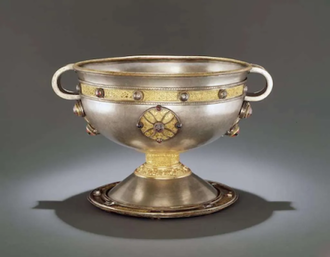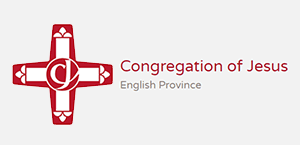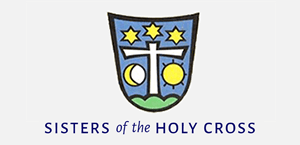Gospel in Art: The kingdom of heaven is like treasure hidden in a field

The Ardagh Chalice, 8th Century AD Irish silver and gilt © National Museum of Ireland
Source: Christian Art
Gospel of 30 July 2025
Matthew 13:44-46
At that time: Jesus said to the crowd: 'The kingdom of heaven is like treasure hidden in a field, which a man found and covered up. Then in his joy he goes and sells all that he has and buys that field.
'Again, the kingdom of heaven is like a merchant in search of fine pearls, who, on finding one pearl of great value, went and sold all that he had and bought it.'
Reflection on the Silver-Gilt Chalice
Our Gospel reading tells of a man who discovers a hidden treasure in a field, a parable that may sound poetic, but is in fact entirely credible. Many of the world's most remarkable artefacts, now housed in museums, were unearthed in just such a way: unexpectedly, beneath ordinary ground. Archaeological digs are often planned with precision, yet time and again history has been revealed not through scholarly design, but through the accidental stroke of a spade or the chance turn of a plough. From buried coins to ancient scrolls, entire civilisations have been rediscovered by people going about their daily work. Jesus' parable would have resonated deeply with his listeners, not only as a spiritual lesson, but as a very real possibility. And just like the man in the story, we too are invited to recognise that when we stumble upon the true treasure of the Kingdom, it's worth giving everything to make it our own.
One remarkable example of an accidental discovery in a field is the Ardagh Chalice. The chalice, along with a wide range of other metalwork from the 8th and 9th centuries, was found in a potato field in Ardagh in 1868 by two young local boys named Jim Quinn and Paddy Flanagan. It is considered to be one of the greatest treasures of the early Irish Church. The two men had cleverly grown potatoes inside a ring fort at Reerasta, near Ardagh, in order to avoid the effects of the potato blight of the Great Irish Famine. When they were digging between the roots of a thorn bush, they hit something hard. Thus they found this beautiful cup. They sold the cup to the Bishop of Limerick, Dr. Butler, for 50 Irish pounds. The Bishop later resold the chalice for a fee of 500 Irish pounds to the Royal Irish Academy. It is now kept at the National Museum of Ireland.
The chalice type is called a calyx ministerialis, made to dispense the Eucharistic blood to the congregation. Its design, even at the time of its manufacture, was somewhat old fashioned and was based on earlier common Byzantine models. It is made of silver and richly decorated with gold, bronze, enamel, and semi-precious stones. The craftsmanship is extraordinary: it includes intricate Celtic designs, panels of filigree, and the names of the apostles inscribed in ornate script around its base.
Jesus says that the kingdom of heaven can be like when someone suddenly finds a treasure in a field. Perhaps Jesus is saying that whereas some people find God after a long search, other people may have a sudden moment of conversion. Both are beautiful ways of finding God. The Lord can meet us at any time, out of the blue, completely unexpectedly.
LINKS
Gospel in Art: https://christian.art/
Today's Reflection: https://christian.art/daily-gospel-reading/matthew-13-44-46-2025/


















